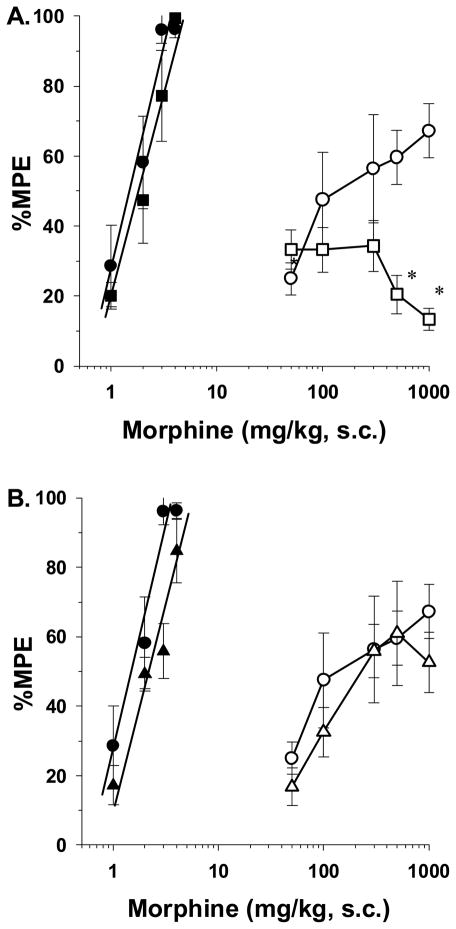Figure 4.
(A) Role of κ opioid receptors in mediating the antinociceptive effects of morphine in tolerant rat pups. Rats were infused with isotonic saline (1 μl/h) or morphine (2 mg/kg/h) for 72-h from implanted osmotic minipumps. On the test day, saline-infused rats received either vehicle s.c. (●) or nor-BNI (■, 10 mg/kg, s.c.), while morphine-infused rats received vehicle (○) or nor-BNI (□), 2.5-h before injection of morphine s.c. The rats were tested 30-min after morphine s.c. in the 49 °C tail-immersion assay. nor-BNI pretreatment had no effect of saline-infused rats, whereas in morphine-infused rats, pretreatment with nor-BNI significantly attenuated morphine’s antinociceptive efficacy at high doses. n=6 rats per dose per treatment group. *p<0.05 compared to morphine-infused rats pretreated with vehicle. (B) Role of δ opioid receptors in mediating the antinociceptive effects of morphine in tolerant rat pups. Rats were infused with isotonic saline (1 μl/h) or morphine (2 mg/kg/h) for 72-h from implanted osmotic minipumps. On the test day, saline-infused rats received either vehicle s.c. (●) or naltrindole (▲, 3 mg/kg, s.c.), while morphine-infused rats received vehicle (○) or nor-BNI (△), 5-min before injection of morphine s.c. The rats were tested 30-min after morphine s.c. in the 49 °C tail-immersion assay. Pretreatment with naltrindole had no effect on morphine’s antinociceptive efficacy in both saline- and morphine-infused rats. n=6 rats per dose per treatment group.

